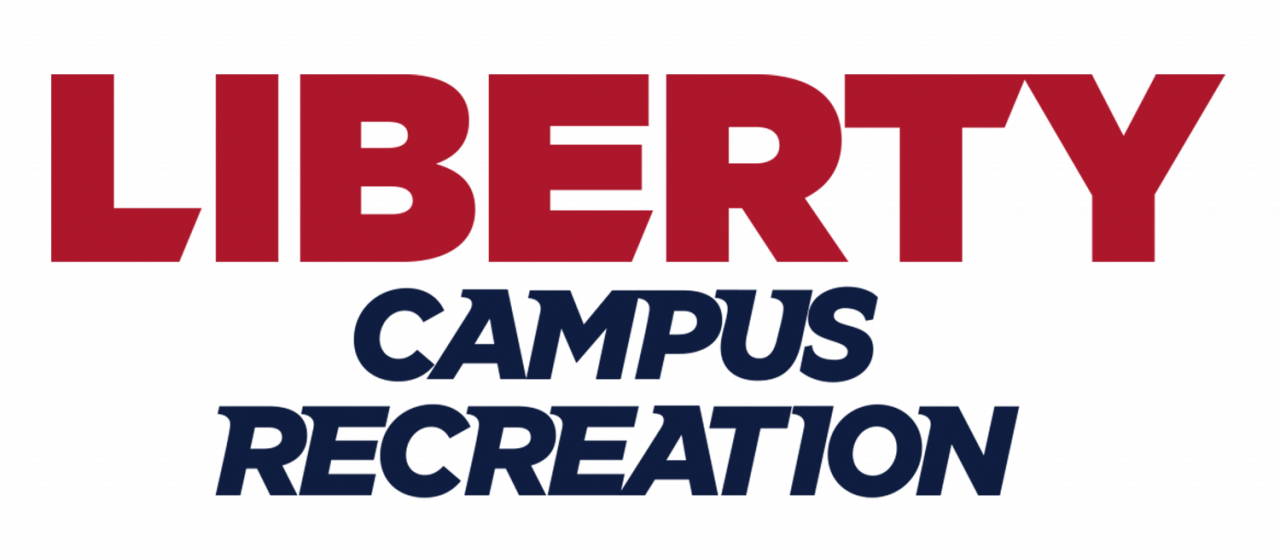What do Horses Eat?
February 24, 2023
Written by Suzanne Flaig, Director Liberty Mountain Equestrian Center
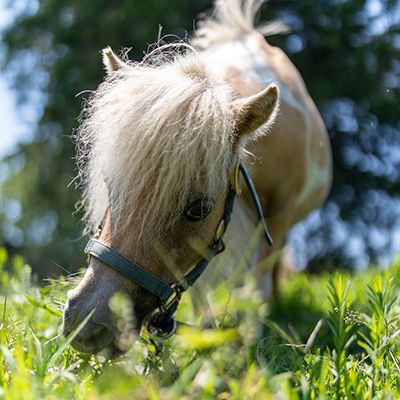
The well-being of any animal is largely dependent on having appropriate nutrition and feeding strategies. Horses are no different and we feed a lot of them at the Liberty Mountain Equestrian Center! Here are some of the basics related to taking care of horses and the general categories of feed that they need.
Forage
The bulk of any horse’s diet should consist of quality forage. Forage is generally considered pasture grass or hay (dried grass). Horses are designed to graze throughout the day. Think of horses in the wild that roam to find enough food to sustain themselves. Or, if you ever see a grassy field with horses in it, chances are you will see horses with their heads down eating. Forage takes some time for a horse to chew, so they intake small, consistent amounts over time. They can eat up to 15 pounds or more of forage a day. Forage provides calories, protein, vitamins and nutrients and if it is good quality, horses do not need much more!
Concentrates
For most horse owners, concentrates are usually called “grain”. Many horses require additional grains to meet their daily nutritional needs depending on factors such as: age, workload …
Caring for Equestrian Tack and Equipment
October 14, 2022
Written by Suzanne Flaig, Director of the Liberty Mountain Equestrian Center
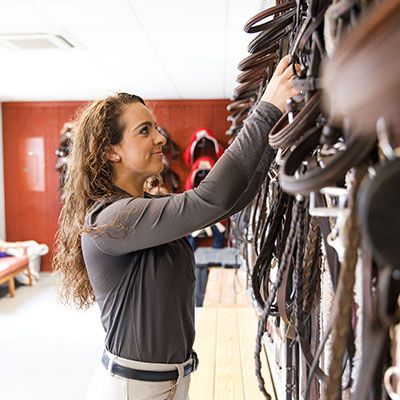
In the equestrian world, “tack” is the term we give to the equipment we use on the horse for handling and riding. We most commonly think of saddles and bridles as our primary tack, but other accessories also fall into this category, like bits, girths, halters, etc. This equipment is important for the safety and enjoyment of both horse and rider, so proper care will ensure your equipment serves its duty and lasts for a while. Tack can be expensive to replace so knowing its purpose and how to care for it, will save you money down the road!
Materials Used for Tack
For saddles and bridles, leather is a popular choice. While there are sometimes synthetic materials used, leather is traditional and most common. The quality of the material used is important because tack should be well fitted to the horse and strong enough to hold the equipment in place. You would not want to be riding a 1,000-pound animal and have your equipment break mid-ride!
Why is Leather Commonly Used?
First, leather (when properly maintained) is a supple product. It has some give to it which is generally more comfortable for the horse carrying the equipment, …
Safety at the Equestrian Center
June 24, 2022
Written by Kelly Shaw, Farm Management Coordinator
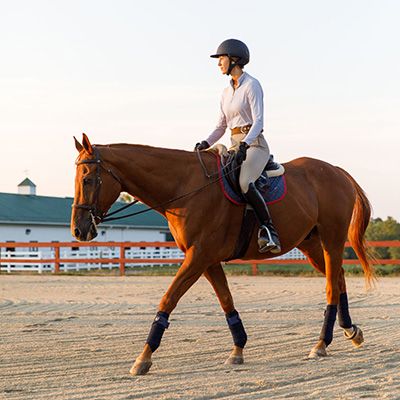
Whether you are visiting, riding, or working with the horses, safety at the Equestrian Center is very important. By following the safety guidelines listed below, you help ensure a great experience for yourself, as well as for our horses. Read on to learn the importance of wearing proper attire, knowing how to read a horse’s body language, and being aware of your own behavior around our equipment and animals.
Wardrobe Etiquette
When visiting the Equestrian Center, you should wear some form of closed-toed shoes. Wearing a pair of boots or closed-toed shoes will also help protect your foot in the event you were to get stepped on. If you are riding during your visit, you need to wear a pair of close-toed boots that will keep your foot from sliding around or out of the stirrups. Riders also must wear riding pants or unripped jeans and a fitted shirt.
Safety in the Barn
Safety in the barn is important for both us and our horses. Never enter a stall without the explicit permission and supervision of the Equestrian Center staff. Make sure you stay alert, watch your surroundings, and be aware of the horses you are working with. When …
The Reason for Blanketing Horses
February 4, 2022
Written by Amber Gayheart, Programming Coordinator
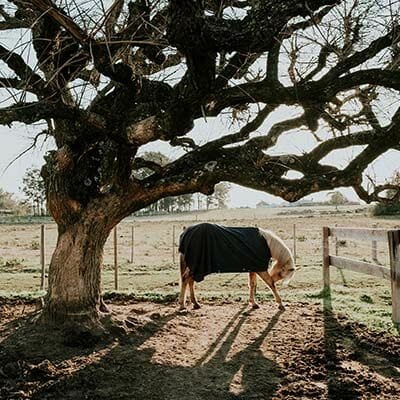
When you look at a field filled with horses in the middle of winter, you might notice that some horses are wearing blankets. You may also notice that other horses are not wearing these blankets. At Liberty Mountain Equestrian Center, we have a wide variety of horses with different blanketing needs. Let’s find out the difference and why a horse would need to wear a blanket vs why they wouldn’t.
A Horse’s Natural Coat
Horses are designed to be able to regulate their body temperature in cold and hot weather. In the winter, a horse has the ability to make itself warmer by growing out a fluffy coat. The longer the horse’s hair is, the easier it is for the horse to hold heat between its fur and its skin. Another unique quality that horses have that helps them to stay warm is they huddle together in order to share body heat. Horses are herd animals and, with that, they can share not only body heat but also protection from the elements (rain, wind, predators, etc.).
There are more than a few reasons why we would need to blanket a horse when it is cold outside. Let’s talk about a …
What Exactly is “Reining”?
October 29, 2021
Written by Milly Cavender, Assistant Director of Programming
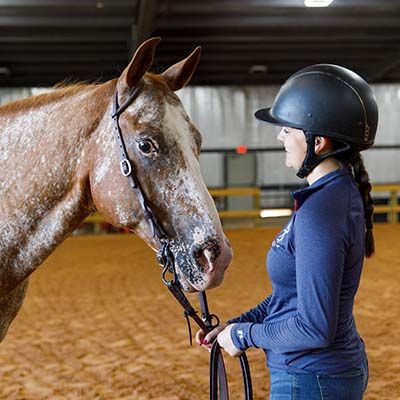
Reining is not the wet stuff that falls from the sky practically every day in February. Reining is a type of equestrian competition where rider and horse execute a precise pattern of maneuvers meant to mimic the behaviors and skills a horse would need on a cattle ranch in the American West. Have you watched the first season of Yellowstone? Then you’ve seen reining.
The Maneuvers
All reining competitions center around patterns that contain a very specific set of maneuvers, or tests if you will. Patterns can have the maneuvers in a wide array of order, but all reining patterns consist of two types of circles, large and fast along with small and slow. They also include sliding stops, spins, rollbacks, and lead changes. Confused yet? This might be a good time to search “horse reining videos” so you can see it in action.
The Scoring
Every horse starts with a score of 70 the moment they enter the competition arena. From there, every maneuver gets a score that goes up or down in half point increments. Let’s say the first maneuver is a large, fast circle and the horse does it, but there’s nothing special about it. The …
What is the Equestrian Dress Code?
May 14, 2021
Written by Harriet Carter, Farm Management Coordinator
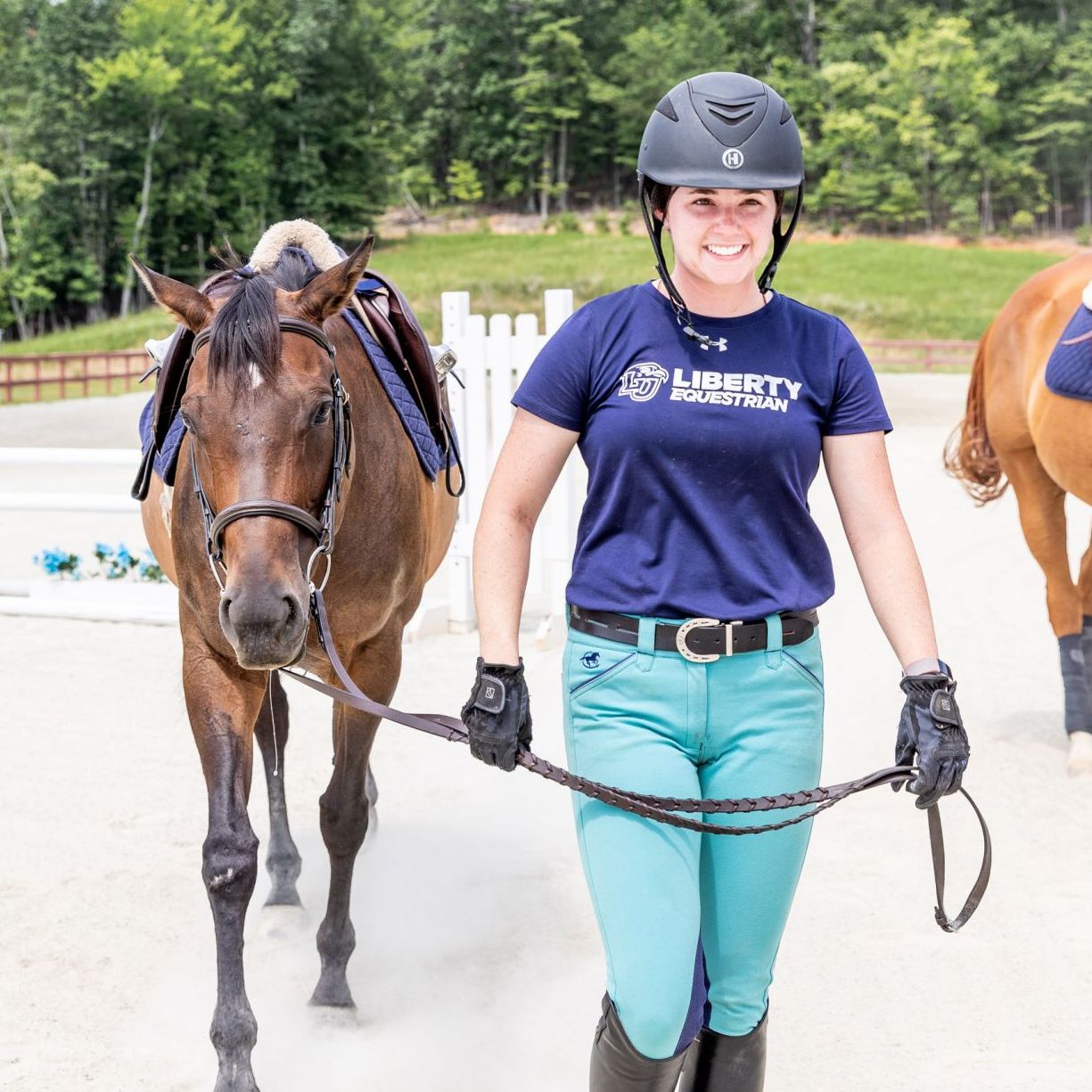
All sports require a particular type of attire, and the equestrian sport is no different. Having the right apparel for equestrian riding is key for both safety reasons and comfort. Equestrian dress observes the sport’s physical and safety demands and considers the unique history of the sport. Whether you are stepping into the barn for the first time or looking for ideas to dress appropriately for the sport, this guide covers all the tips on feeling confident and well dressed in the saddle.
Long Fitted Pants
It is logical to assume that wearing shorts is appropriate for horse riding during sunny days. Unfortunately, shorts and the equestrian sport do not mix well. Friction from bare legs and the saddle moving from the horse’s natural motion leaves the rider with uncomfortable pinches down the legs [2]. Also, wearing baggy clothing such as loose pants, sweaters, or scarves is not recommended as they can easily get caught on the saddle, risking being dragged by the horse.
Dressing in long, tight fitting pants protects you from being pinched by the saddle and can keep sharp objects that may be lurking in the barn such as hay, farrier nails, and splinters off of …
Horse Talk 101
August 19, 2020
Written by Kimberly Counts, Barn Staff
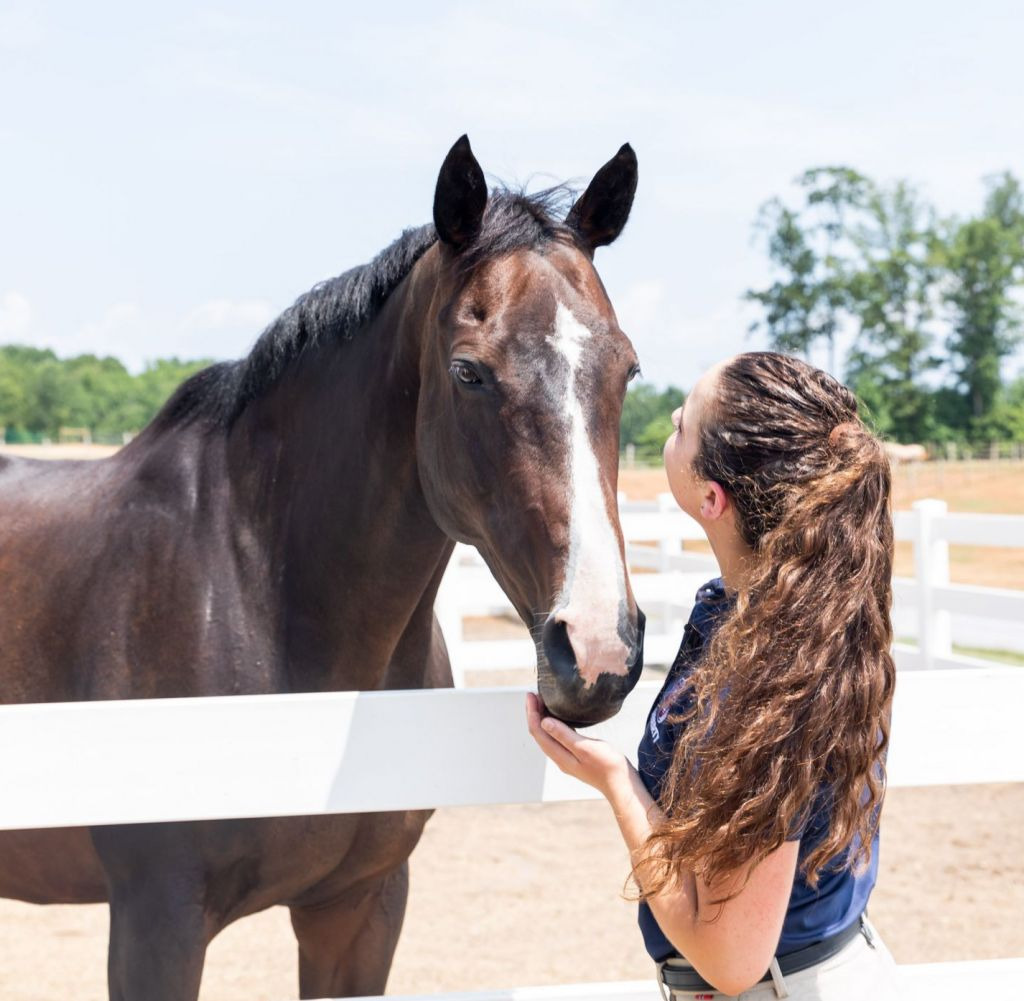
Have you ever looked at a horse and wondered what they might be thinking? Horses communicate in mysterious ways, but if you look closely, you can figure out what they are trying to tell you.
Sounds
Horses are generally very expressive creatures who have an interesting way of telling you what they’re thinking! They have a unique system to communicate amongst themselves and people. I’m sure you’ve heard a horse whinny, but do you know what it means? Whinnying and neighing are a horse’s way of letting you know what they are feeling or telling you they want something. These sounds can mean a variety of things like: “I’m hungry,” “Take me outside,” or “Pay attention to me!” If you walk through the Liberty Mountain Equestrian Center around 4:30 P.M., you will hear a chorus of whinnies from hungry horses demanding their food. If we happen to be even a few minutes late, we have about 50 hungry horses telling us it’s time to eat! Horses thrive on a schedule and are quick to learn what time things get done.
Another way they can “talk” to us is through snorting. A snort generally means they’re alarmed by something, and it can be their way of assessing the situation. For the most part, the snorts are …
Western vs English Riding
June 17, 2020
Written by Kimberly Counts, Assistant Coach/ Barn Staff
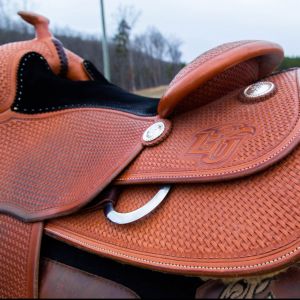
There are so many different activities and things you can do when it comes to riding a horse. Here at Liberty, the two disciplines we focus on are Western and English riding. Let’s take a closer look at the differences between the disciplines and find out what riding event you might like best!
Equipment
The most obvious distinction between English and Western riding is what the horse has on. When looking at the two saddles side by side, the most notable difference is the big horn on the front of the Western saddle. While many people think it’s an area to grab on to if they’re scared or nervous, there’s actually a very functional reason it’s there: ranchers use the horn as something to tie their ropes to, whether it be to pull or secure something. Western saddles are a lot heavier than English saddles and if you’re like me, it can sometimes be a struggle to heave the saddle up onto the taller horses’ backs!
An English saddle is smaller, more compact and not as flashy as a Western saddle. LU has saddles that are what we call forward seat, or close contact saddles. This type of tack …
Facility Series: Equestrian Center
May 22, 2020
Written By Victoria Dissmore, Marketing Employee
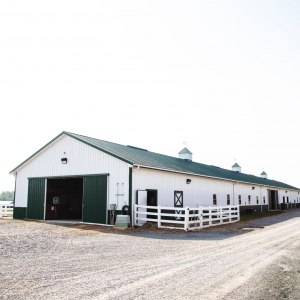
So, you’re probably asking yourself, “What can I do at the Equestrian Center?”, and there are a variety of opportunities for the Liberty and local communities available! Liberty is blessed to have this USHJA Recognized Riding Academy that spans across 380 acres of Liberty Mountain. If you’re looking for a way to enjoy the great outdoors and meet some animal friends, come visit the Equestrian Center!
Facility Tours
Anyone is welcome to visit the Equestrian Center from 9 a.m.–5 p.m. The staff and horses love having visitors to tour the facility and pet their favorite horses. If you’re looking for an educational experience for your children or simply get some fresh air, we highly recommend checking out this fun opportunity!
Trail Rides
Students, faculty, and staff can explore the Liberty Mountain property on horseback on a guided tour around the mountain for free. Come experience the soft rhythmic motion of the saddle as your horse strolls through the shaded trees with a cool breeze blowing by and the sun peeking through the trees.
Trail rides are by appointment only and limited to roughly 2 people at a time based on experience levels. The ride starts with a brief lesson in the outdoor riding …
